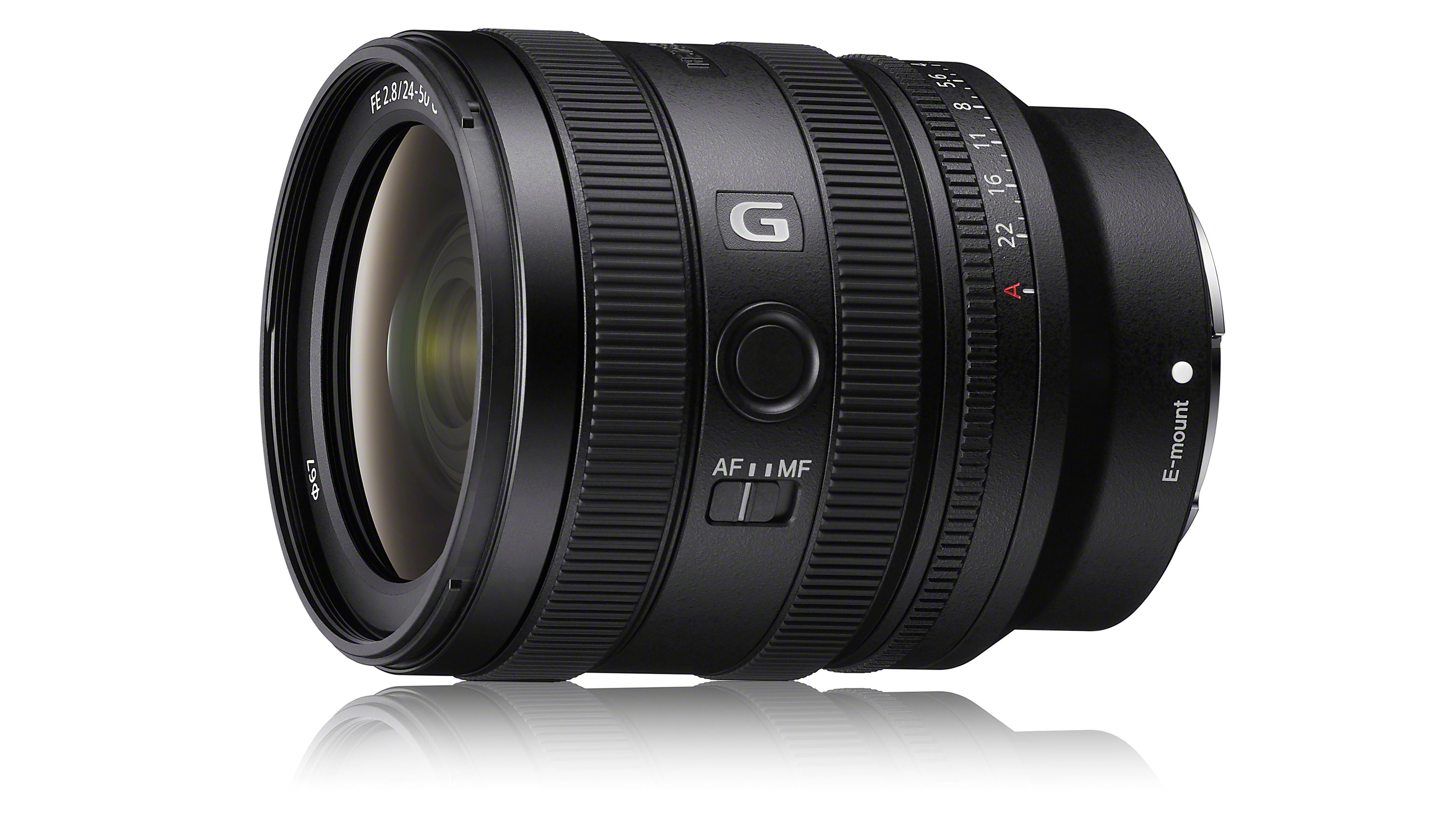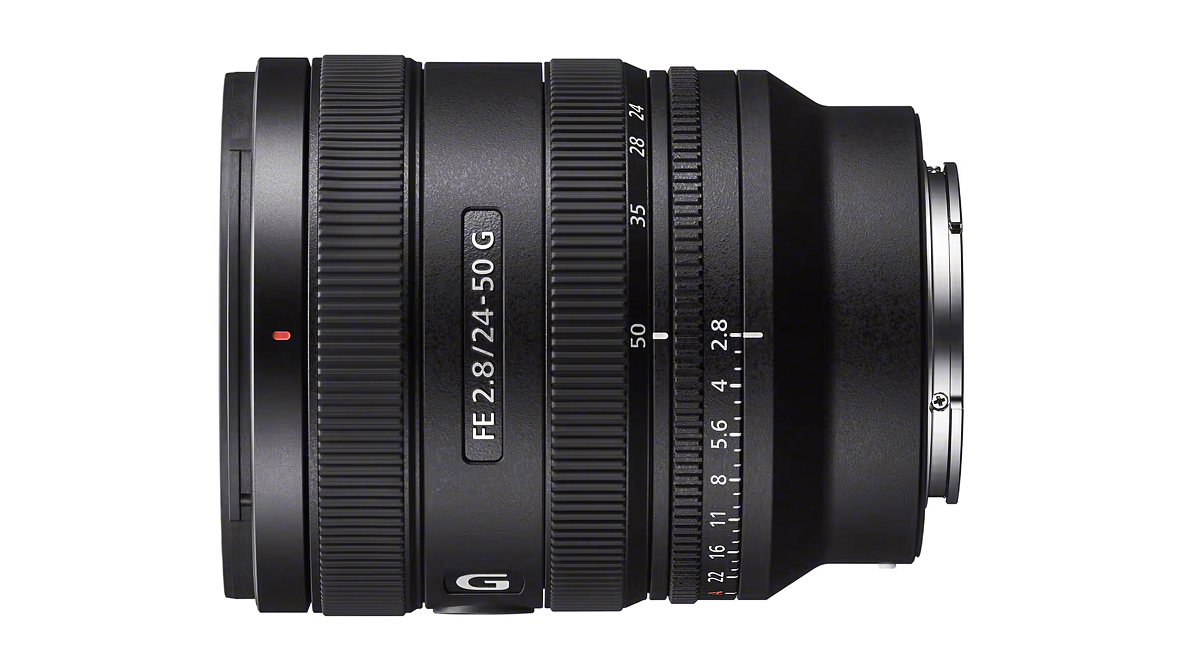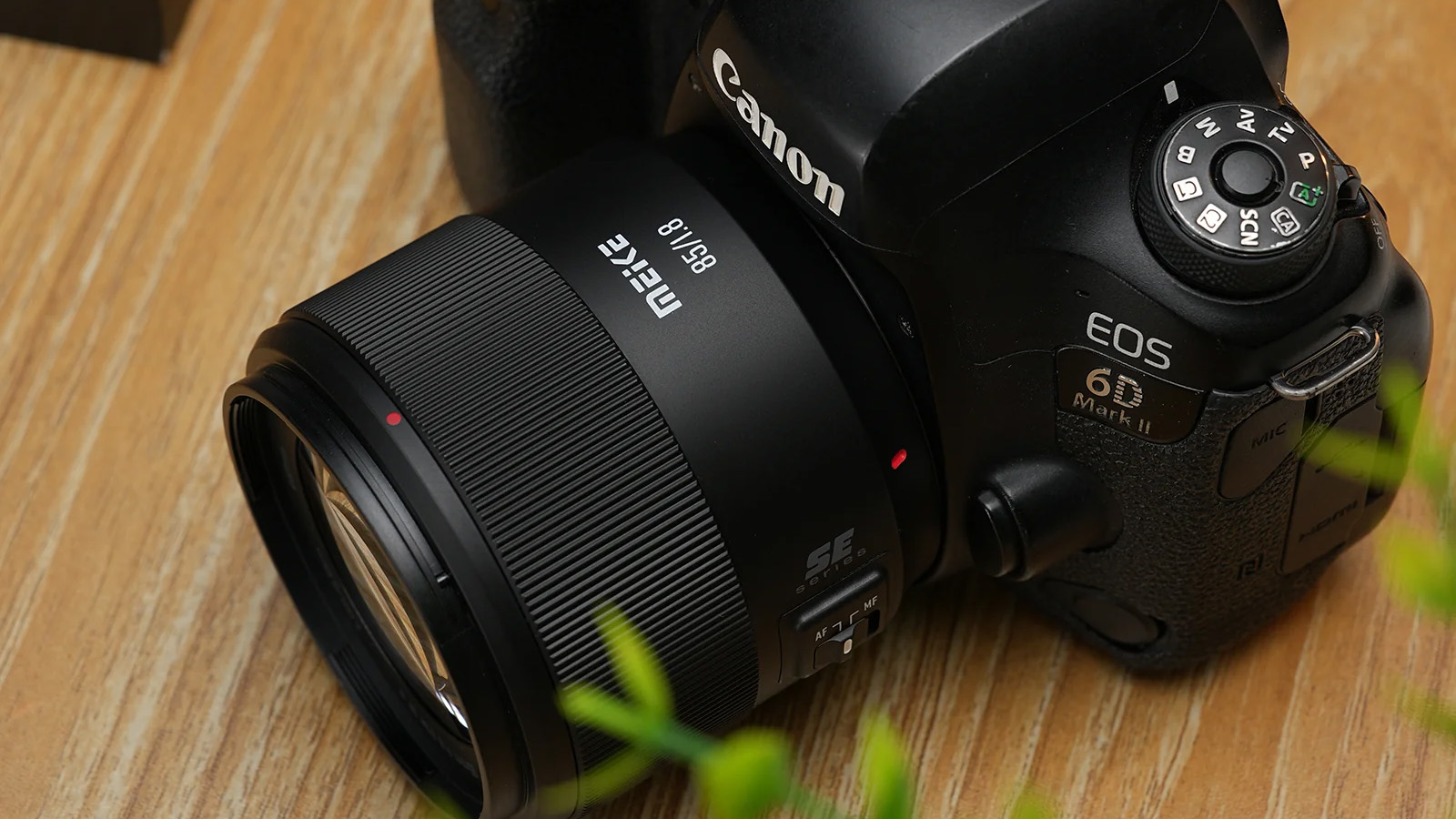The Sony 24-50mm F2.8 G is a new compact and powerful standard zoom
The Sony 24-50mm F2.8 G addresses a full frame mirrorless issue – lenses that are too big for compact full frame bodies!

The Sony 24-50mm F2.8 G might be giving you a sense of déja vû. We’ve seen compact kit lenses from Sony before, haven’t we? What about the Sony FE 28-60mm f/4-5.6? But that 28-60mm is a very different lens, a retractable variable aperture kit lens for the consumer marker. What enthusiasts and pros really want, and what this new Sony lens provides, is a constant aperture f/2.8 premium zoom that doesn’t weigh more (or cost more) than your camera.
The Sony 24-50mm F2.8 G sacrifices some reach at the long end of its zoom range in exchange for much more manageable dimensions, not to say pricing. The usual pro choice, the Sony FE 24-70mm f/2.8 GM II costs $2,298 / £1,999, weighs 695g and is 120mm long. It’s 22% lighter than the Mark I version, but it’s still a monster. The other alternatives are only f/4 lenses (Sony FE 20-70mm F4, Zeiss 24-70mm F4).
What Sony wanted to make was a lens that was neither too slow nor too heavy, but “just right”. Whether or not it qualifies as one of the best Sony lenses will depend on how willing you are to exchange focal range for portability.
The Sony 24-50mm F2.8 G follows a current trend towards smaller lenses with smaller zoom ranges but top-level optics and features. And while the new lens isn’t one of Sony’s revered G Master lenses, it’s still optically advanced. Sony’s aim was to achieve outstanding image capability for its size, sharp and detailed results at all focal lengths, with excellent bokeh and close up performance.
Sony 24-50mm F2.8 G features and design
Optically, the Sony 24-50mm F2.8 G incorporates four aspherical elements to minimize aberrations and two ED (extra low dispersion) glass elements to suppress chromatic aberration. Clearly, though, it also relies on digital corrections too, as Sony points out that images are corrected by default in-camera but raw files will need a correction profile in Adobe Lightroom, for example. Raw video files will not be corrected either. This is becoming a standard characteristic of mirrorless lenses, so Sony is not really doing anything different here.
The autofocus specifications are similarly advanced. The Sony 24-50mm F2.8 G incorporates dual Linear Motors for fast, quiet AF with what Sony claims will be high tracking performance – the new lens will be able to keep up with the 120fps burst mode of the Sony A9 III, for example, and 4K 120p video.
As usual with new Sony lenses, this one has been designed with video in mind as well as stills photography. It supports Sony’s Dynamic/Active Stabilization modes and also focus breathing compensation on those cameras that have this feature. It has focus and zoom rings and a de-clickable aperture ring, plus a programmable Focus Hold button and an AF/MF switch. The Sony 24-50mm F2.8 G is dust and moisture resistant and has a fluorine coated front element to repel oil, grease and water droplets.
The best camera deals, reviews, product advice, and unmissable photography news, direct to your inbox!
Other specs include a minimum focus distance of 0.19m (24mm) - 0.3m (50mm), a maximum magnification of 0.3x (0.33x with MF), an 11-blade circular aperture and 67mm filters.
Sony wanted to achieve a compact, lightweight design which didn’t compromise on optical performance, and the result is a lens that measures 74.8 x 92.3mm and weighs 440g. It’s not as compact as the Sony FE 28-60mm f/4-5.6, the Canon RF 24-50mm f4.5-6.3 IS STM or the Nikon Z 24-50mm f4-6.3, but then these are variable-aperture retracting kit lenses aimed at the lower end of the market. The Sony 24-50mm F2.8 G is a higher-end constant-aperture zoom pitched against much larger and more expensive lenses or slower f/4 alternatives.
Sony 24-50mm F2.8 G price and availability
The Sony 24-50mm F2.8 G will be available from April 2024 with a competitive looking UK price of £1,150 and it will set you back AU$1,999 in Australia (about $1,455 in the US) – though fans of fast, compact zooms might also want to take a look at the substantially cheaper Tamron 20-40mm f/2.8 Di III VXD as a wider alternative with a similar overall zoom range.

Rod is an independent photography journalist and editor, and a long-standing Digital Camera World contributor, having previously worked as DCW's Group Reviews editor. Before that he has been technique editor on N-Photo, Head of Testing for the photography division and Camera Channel editor on TechRadar, as well as contributing to many other publications. He has been writing about photography technique, photo editing and digital cameras since they first appeared, and before that began his career writing about film photography. He has used and reviewed practically every interchangeable lens camera launched in the past 20 years, from entry-level DSLRs to medium format cameras, together with lenses, tripods, gimbals, light meters, camera bags and more. Rod has his own camera gear blog at fotovolo.com but also writes about photo-editing applications and techniques at lifeafterphotoshop.com

